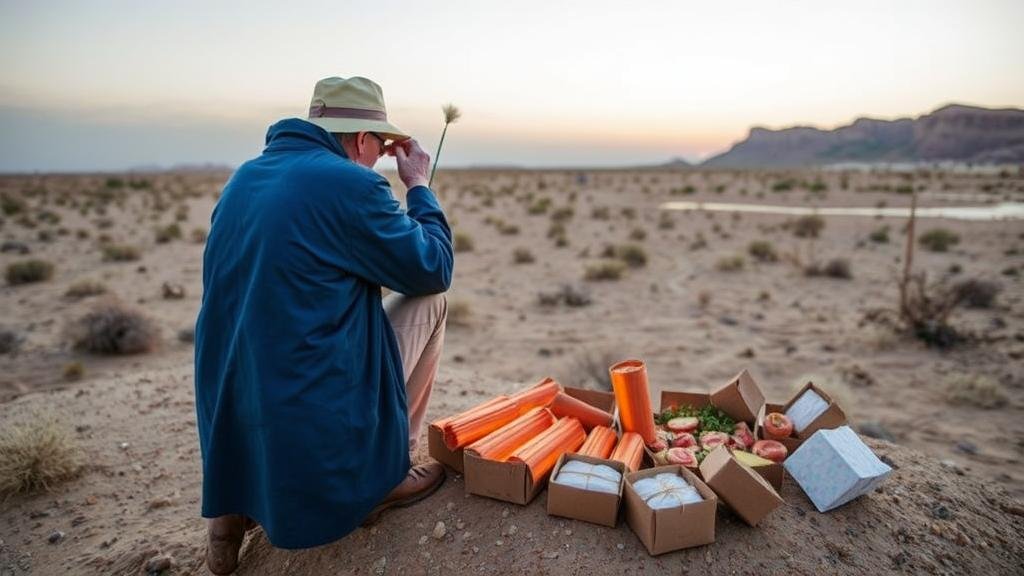Spotting Evidence of Ritual Offerings in Isolated Desert Locations
Spotting Evidence of Ritual Offerings in Isolated Desert Locations
The practice of ritual offerings spans numerous cultures and epochs, often involving the placement of valuable items, food, or symbolic objects in specific locations with spiritual significance. As modern archaeology advances, researchers increasingly find evidence of these rituals in remote desert environments, highlighting the interplay between geography, culture, and spirituality. This article delves into the methodologies, case studies, and findings surrounding ritual offerings in isolated desert locations, providing a comprehensive understanding of this fascinating subject.
Understanding Ritual Offerings
Ritual offerings are often associated with expressions of gratitude, supplication, or appeasement directed toward deities or ancestral spirits. In many cultures, these offerings are not random but are imbued with specific symbolic meanings and geographical considerations. For example, offerings might be placed near water sources, sacred sites, or locations of significant historical battles.
Geographical Features of Isolated Deserts
Deserts, characterized by their arid conditions and sparse populations, present unique challenges and opportunities for archaeological research. Notable desert features can include:
- Dry Riverbeds: Often prime sites for ritual offerings as they may serve as ancient pathways for both human and spiritual journeys.
- Rock Formations: These can act as natural markers or interfaces between earthly and celestial realms, making them ideal for offerings.
- Natural Springs: Locations of water are often considered sacred and can be focal points for rituals.
Methodologies for Detecting Ritual Offerings
Field archaeologists employ a variety of methodologies to spot evidence of ritual offerings in desert locations, including:
- Remote Sensing Techniques: Methods such as satellite imagery and LiDAR can reveal anomalies in landscape patterns indicative of human activity.
- Ground Penetrating Radar (GPR): This non-invasive technique allows researchers to explore subsurface archaeological features without excavation.
- Surface Surveying: Walking predetermined transects of land can help identify artifacts and features on the ground.
Each of these methodologies brings unique advantages, allowing researchers to paint a comprehensive picture of ritualistic behaviors in ancient desert communities.
Case Studies of Ritual Offerings in Deserts
Several archaeological discoveries in deserts worldwide illustrate the significance of ritual offerings:
- The Ancestral Puebloans (Southwestern United States): In the deserts of the American Southwest, offerings of pottery and textile fragments have been found in kivas, suggesting a deep connection to ancestral practices and spiritual beliefs.
- Egyptian Desert Shrines: Archaeological evidence from the Sahara has revealed small shrines housing offerings of food, pottery, and even mummified animals, indicating strong rituals associated with death and the afterlife.
- Chavin Culture (Peru): Ritual offerings, including sacrificed llamas and ceremonial objects, have been uncovered in high-altitude desert environments, illustrating the role of desert geography in shaping religious practices.
Understanding the Cultural Context
It is crucial to consider the cultural backdrop when analyzing evidence of ritual offerings. Influences such as religious beliefs, social hierarchy, and environmental challenges all shape these practices. For example, drought-stricken areas might see offerings tied to water piety, while fertile stretches might reflect agricultural reverence.
Challenges and Future Directions
While the study of ritual offerings in desert locations is rich and varied, it comes with its own set of challenges:
- Environmental Degradation: Erosion, climate change, and human encroachment can obliterate evidence of past rituals.
- Funding Limitations: Archaeological expeditions often depend on limited grants and donations, restricting the breadth of research that can be conducted.
- Cultural Sensitivity: Many sites may hold spiritual importance to contemporary indigenous populations, necessitating a respectful approach to study.
Future research should focus on integrating advanced technology with interdisciplinary approaches to unravel the complexities of ritual offerings in desert settings. Collaborating with local communities and leveraging indigenous knowledge can enhance archaeological findings and promote cultural heritage preservation.
Actionable Takeaways
For those interested in the archaeology of ritual offerings in deserts:
- Engage with academic resources and local archaeological societies to learn more about ongoing research.
- Consider the impact of climate change and cultural heritage initiatives when advocating for archaeological preservation.
- Explore opportunities for contributing to field studies or volunteering on archaeological digs to gain firsthand experience.
As we continue to deepen our understanding of the connection between ritual offerings and the environments in which they occur, the importance of interdisciplinary collaboration and cultural respect will only become more pronounced.



